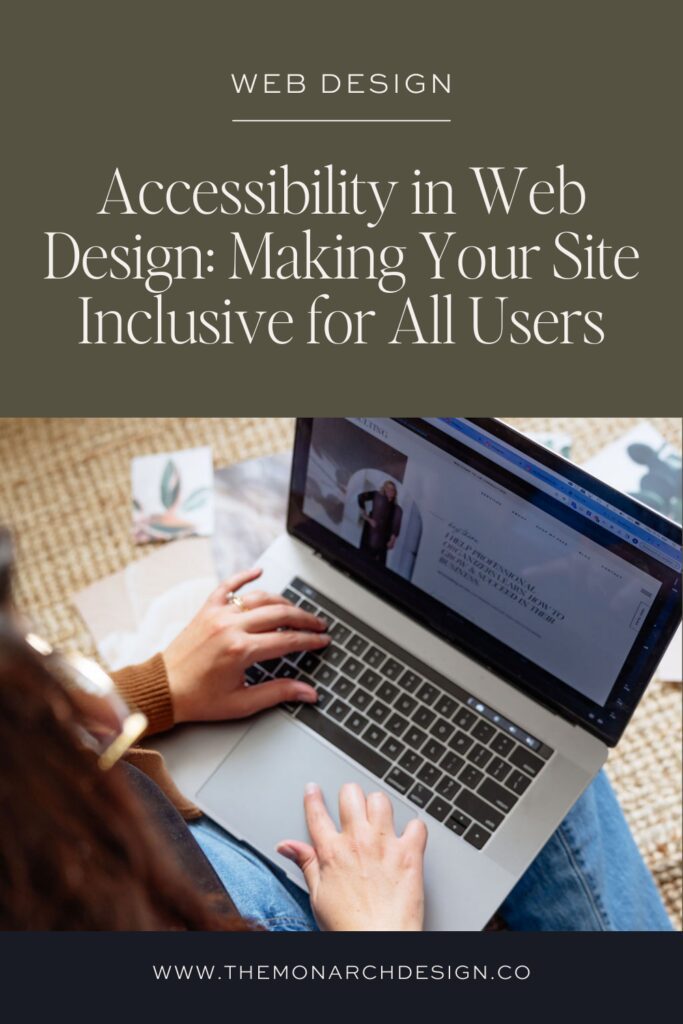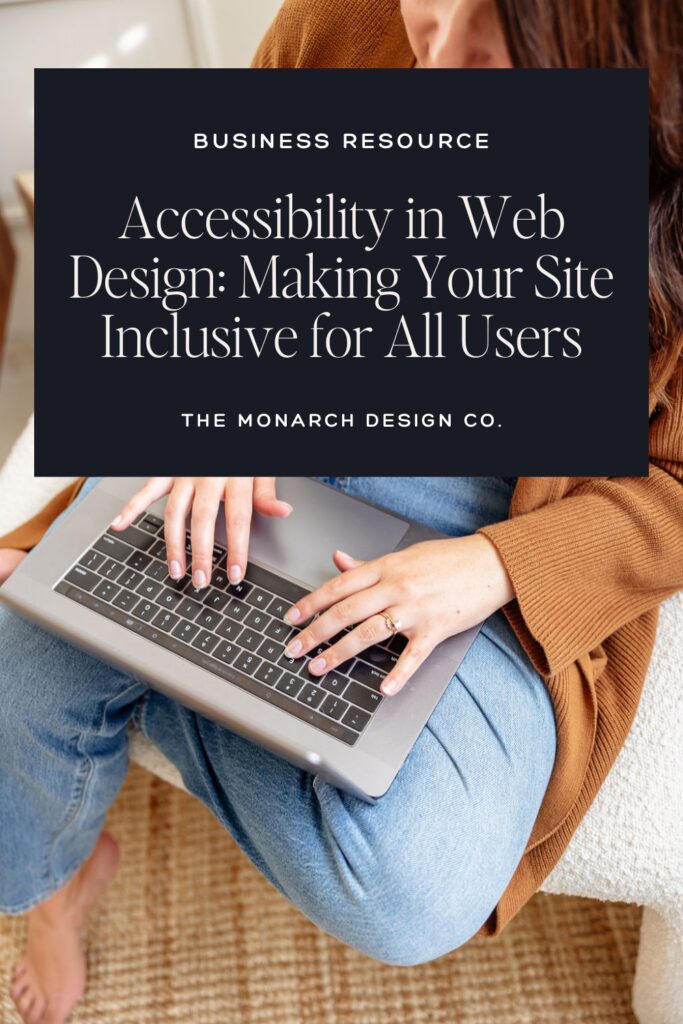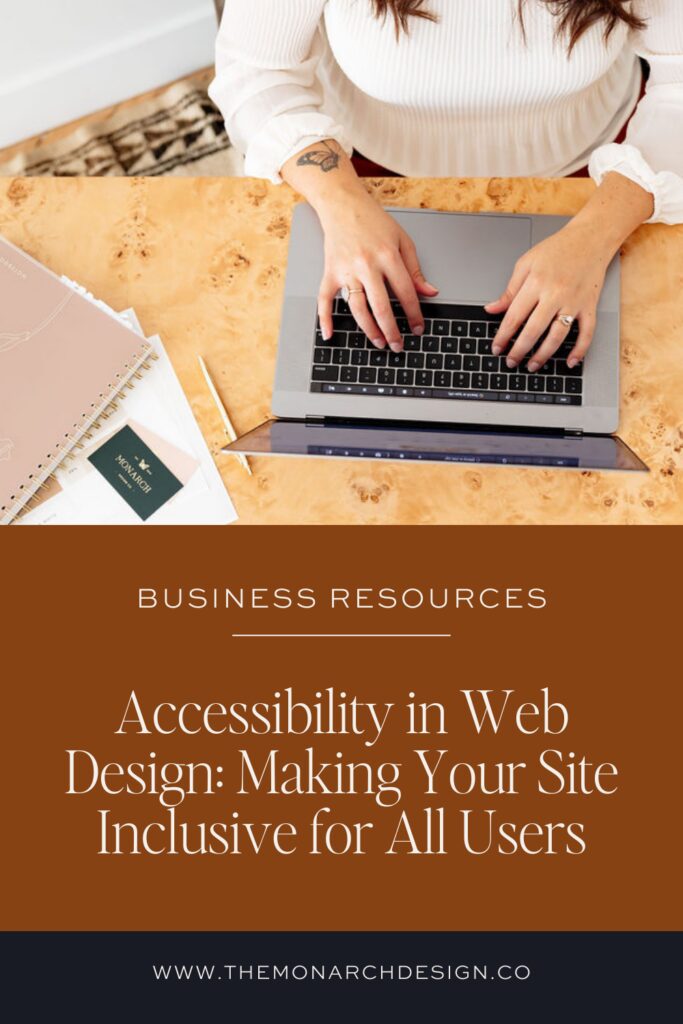Accessibility in Web Design: Making Your Site Inclusive for All Users
November 4, 2024
In today’s digital age, having a website is crucial for businesses and individuals alike. However, it’s not enough to simply have an online presence – your website needs to be accessible to everyone, regardless of their abilities or disabilities. Web accessibility design is not just a nice-to-have feature; it’s a necessity that ensures equal access to information and functionality for all users.
Understanding Web Accessibility
Web accessibility refers to the practice of designing and developing websites that can be used by people with various disabilities, including visual, auditory, motor, and cognitive impairments. According to the World Health Organization, over 1 billion people worldwide live with some form of disability. By implementing accessible design principles, we can create a more inclusive online environment that benefits everyone.

The Importance of Web Accessibility
- Inclusivity: Accessible websites ensure that all users, regardless of their abilities, can access and interact with your content.
- Legal Compliance: Many countries have laws requiring websites to be accessible, such as the Americans with Disabilities Act (ADA) in the United States.
- Improved User Experience: Accessibility features often enhance the overall user experience for all visitors.
- Broader Audience: An accessible website can reach a larger audience, potentially increasing engagement and conversions.
- SEO Benefits: Many accessibility practices align with SEO best practices, potentially improving your search engine rankings.
Key Principles of Web Accessibility Design
To create truly accessible websites, it’s essential to understand and implement the following key principles:
1. Perceivable Information and User Interface
All users should be able to perceive the information presented on your website. This includes:
- Providing text alternatives for non-text content
- Creating content that can be presented in different ways without losing meaning
- Making it easier for users to see and hear content
2. Operable User Interface and Navigation
Users should be able to operate the interface and navigate your website easily. This involves:
- Making all functionality available from a keyboard
- Giving users enough time to read and use content
- Helping users navigate and find content
- Making it easier to use inputs other than keyboard
3. Understandable Information and User Interface
The information and operation of the user interface must be understandable. This includes:
- Making text readable and understandable
- Making content appear and operate in predictable ways
- Helping users avoid and correct mistakes
4. Robust Content and Reliable Interpretation
Content should be robust enough to be interpreted reliably by a wide variety of user agents, including assistive technologies. This means:
- Maximizing compatibility with current and future user tools
Implementing Web Accessibility: Best Practices
Now that we understand the principles, let’s explore some best practices for implementing web accessibility design:
1. Use Semantic HTML
Semantic HTML helps assistive technologies understand the structure and meaning of your content. Use appropriate HTML elements like <header>, <nav>, <main>, and <footer> to provide context to your content.
2. Provide Alternative Text for Images
Always include descriptive alt text for images. This allows screen readers to convey the image’s content to visually impaired users.
htmlCopy<img src="company-logo.png" alt="Monarch Design Co. logo">
3. Ensure Keyboard Accessibility
Make sure all interactive elements on your website can be accessed and operated using only a keyboard. This is crucial for users with motor impairments who may not be able to use a mouse.
4. Use Sufficient Color Contrast
Ensure there’s enough contrast between text and background colors. This helps users with visual impairments read your content more easily. The Web Content Accessibility Guidelines (WCAG) recommend a contrast ratio of at least 4.5:1 for normal text and 3:1 for large text.
5. Design Clear and Consistent Navigation
Create a clear and consistent navigation structure throughout your website. This helps users understand how to move around your site and find the information they need.
6. Use Descriptive Link Text
Avoid using vague link text like “click here” or “read more.” Instead, use descriptive text that clearly indicates where the link will take the user.
7. Provide Transcripts and Captions
For audio and video content, provide transcripts and captions. This ensures that users who are deaf or hard of hearing can access the information.
8. Design Responsive Layouts
Create responsive layouts that adapt to different screen sizes and orientations. This benefits users with visual impairments who may need to zoom in on content.
9. Use ARIA Landmarks
Implement ARIA (Accessible Rich Internet Applications) landmarks to provide additional context to screen readers about the structure and purpose of different parts of your web page.
10. Conduct Regular Accessibility Audits
Regularly test your website for accessibility issues using both automated tools and manual testing. This helps ensure your site remains accessible as you make updates and changes.
Tools and Resources for Web Accessibility Design
To help you implement these best practices, here are some valuable tools and resources:
- WAVE (Web Accessibility Evaluation Tool): A suite of evaluation tools that help authors make their web content more accessible.
- axe DevTools: A browser extension that identifies accessibility issues in your web pages.
- Color Contrast Analyzer: A tool to check the contrast ratio of your color combinations.
- NVDA (NonVisual Desktop Access): A free screen reader for Windows that helps you test how your site performs for visually impaired users.
- https://webaim.org/articles/WebAIM Articles and Resources: A wealth of information on web accessibility topics and techniques.
- The A11Y Project: A community-driven effort to make web accessibility easier.
The Role of Designers in Web Accessibility
As highlighted in the RGD‘s Access Ability 2 guide, designers play a crucial role in creating accessible digital experiences. Here are some key takeaways for designers:
- Consider accessibility from the start: Incorporate accessibility considerations into your design process from the beginning, rather than treating it as an afterthought.
- Use design to enhance understanding: Utilize visual design elements to improve comprehension and reduce cognitive load for all users.
- Think beyond visual design: Consider how your designs will be interpreted by assistive technologies and ensure they convey the same information and functionality.
- Collaborate with developers: Work closely with developers to ensure that accessibility features are implemented correctly in the final product.
- Educate clients on accessibility: Help clients understand the importance of accessibility and how it benefits their business and users.
Embracing Web Accessibility Design
Web accessibility is not just about compliance or reaching a wider audience – it’s about creating a more inclusive digital world. By implementing these accessibility principles and best practices, we can ensure that our websites are usable by everyone, regardless of their abilities or the devices they use.
Remember, accessibility is an ongoing process. As technology evolves and new standards emerge, it’s important to stay informed and continuously improve your website’s accessibility. By prioritizing web accessibility design, you’re not only improving the user experience for people with disabilities but also creating a better website for all users.
Let’s embrace inclusive design and make the web a more accessible place for everyone. After all, the power of the web is in its universality. Access by everyone, regardless of disability, is an essential aspect.
Are you ready to make your website more accessible? Start by conducting an accessibility audit of your current site and implementing these best practices. Your users – all of them – will thank you for it. Reach out for a free audit!



Leave a Reply Cancel reply
Menu
serving simcoe county, barrie, the greater toronto area & worldwide
Contact
hello@themonarchdesign.co
Branding & Showit Web Design Studio | Serving Creative Entrepreneurs, Service Providers & Wedding Professionals in Barrie, Toronto, Niagara, Muskoka, Cambridge, Kitchener, Guelph, Hamilton, Burlington, Oakville, Mississauga, Vaughan, Simcoe County & Southern Ontario.
Monarch Design Co. © 2025 | Site & Branding Designed by Monarch Design Co. | Site Credits